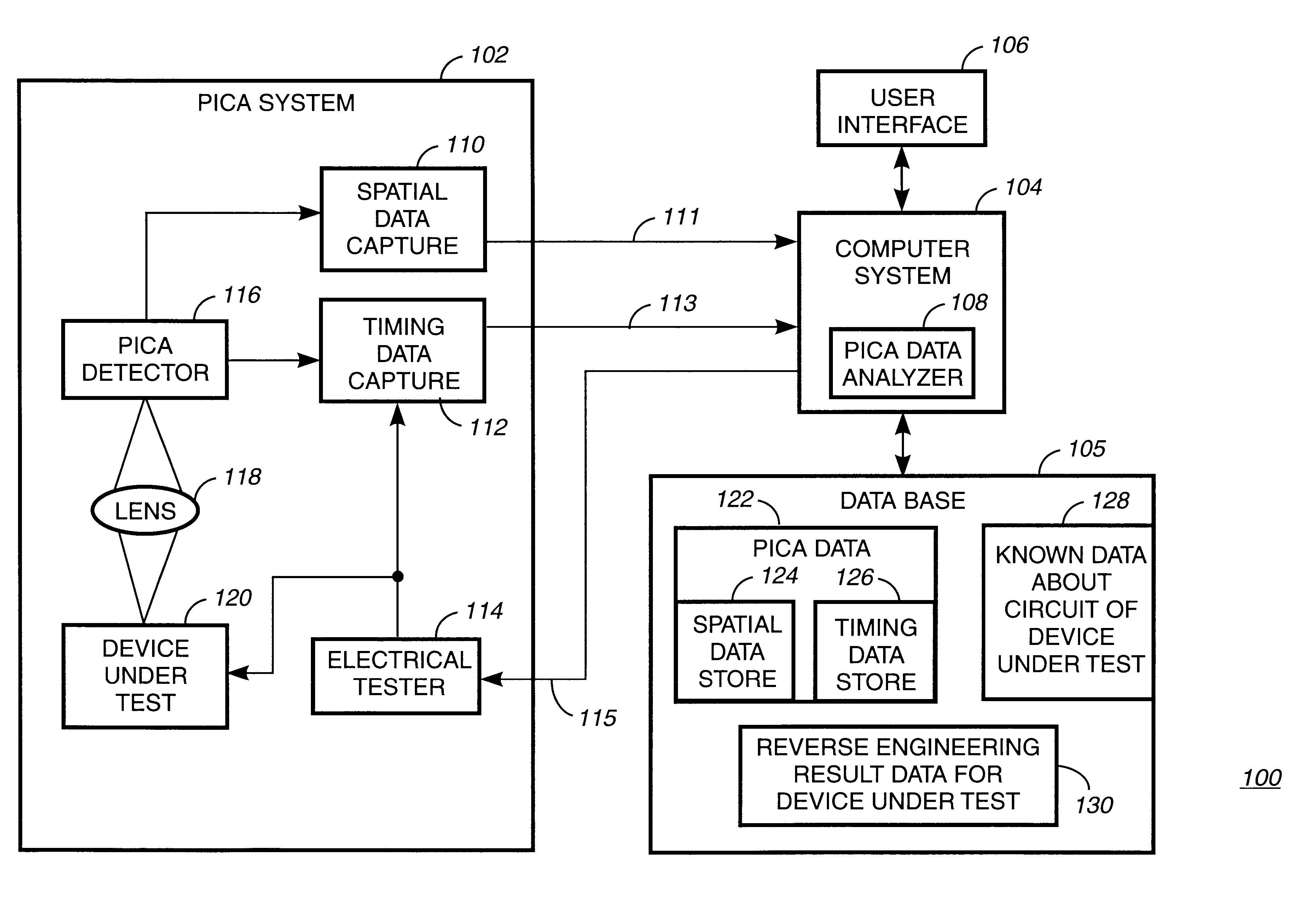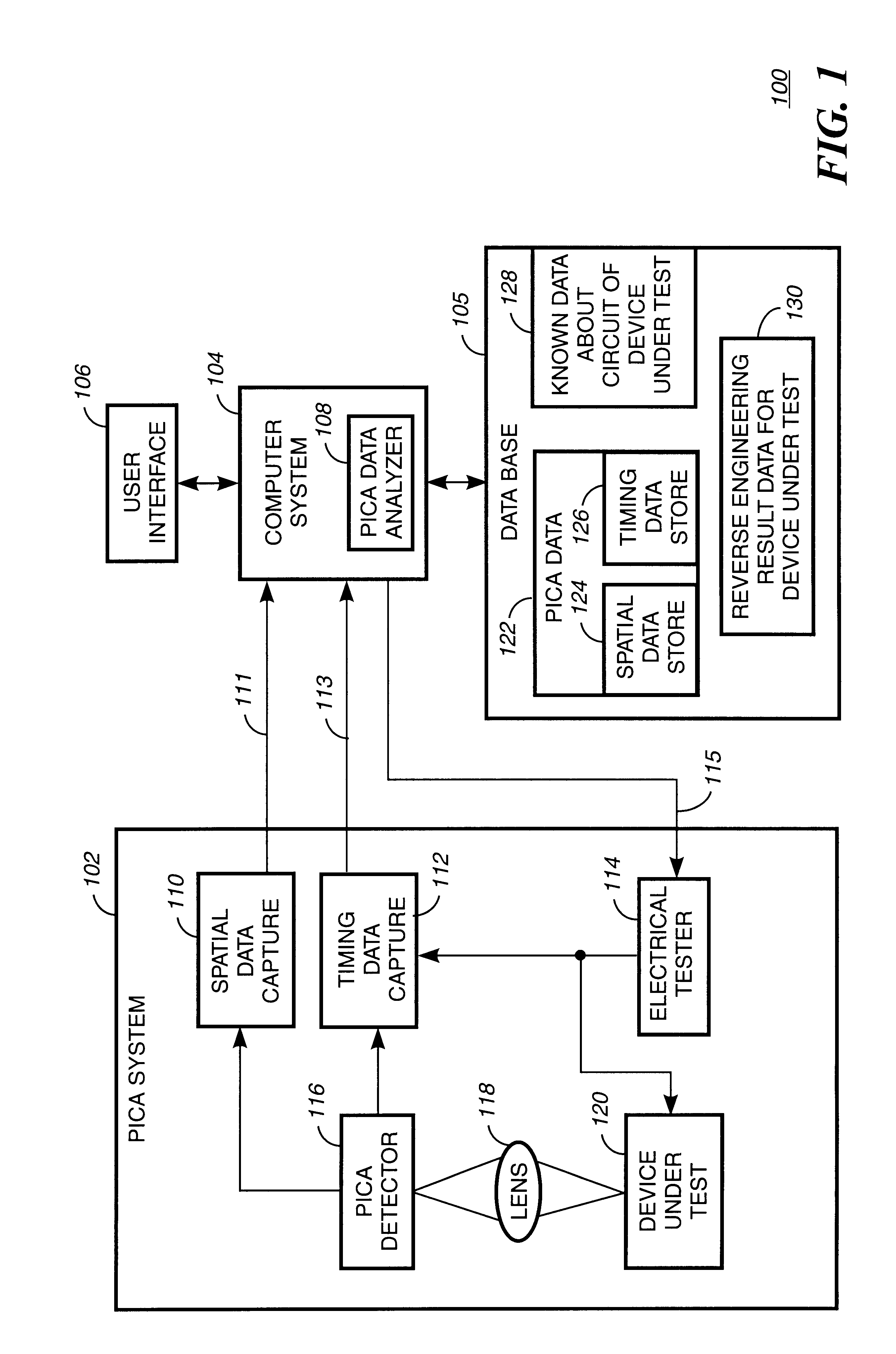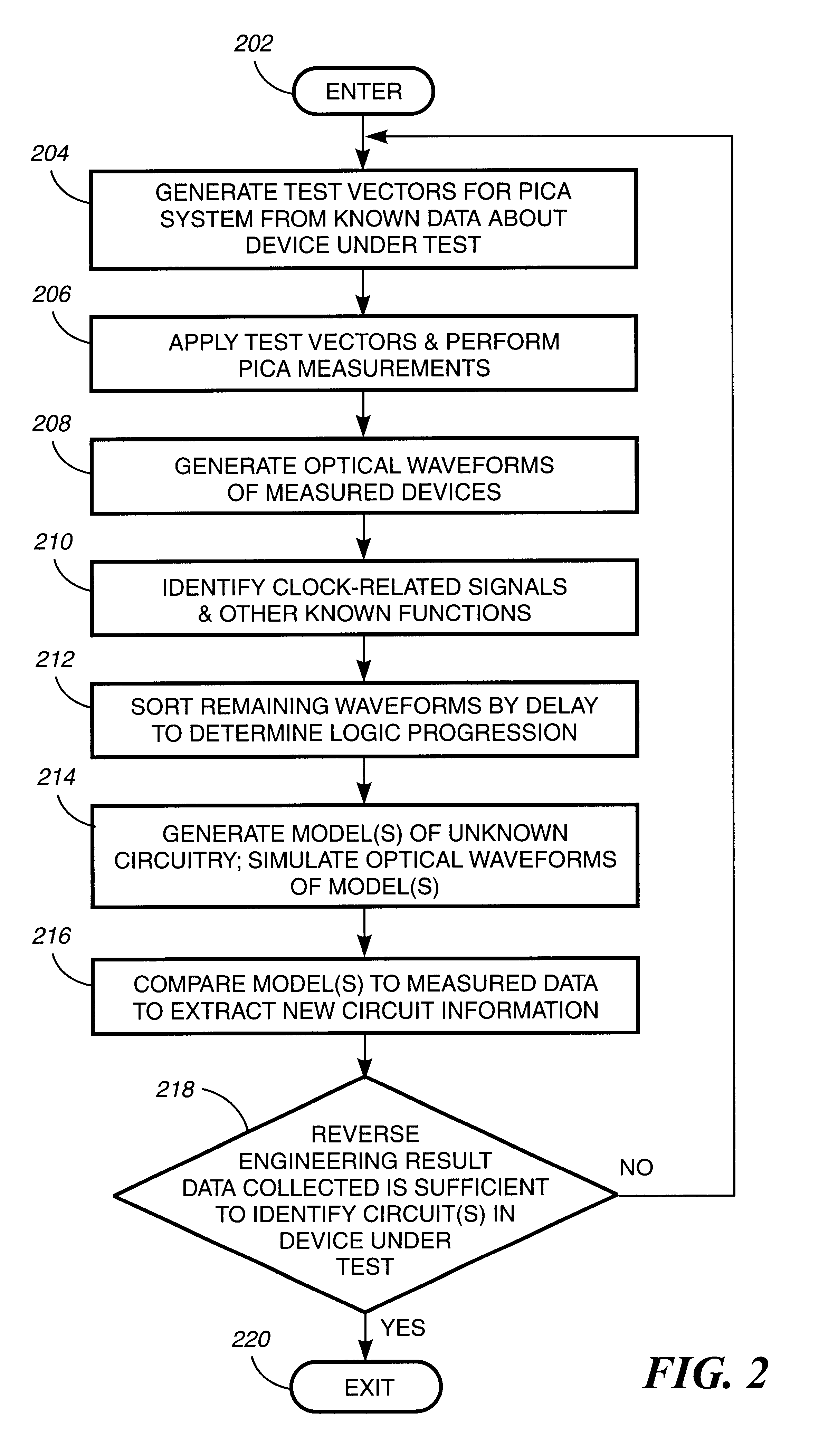Method and apparatus for reverse engineering integrated circuits by monitoring optical emission
a technology of optical emission and reverse engineering, applied in the direction of electronic circuit testing, measurement devices, instruments, etc., can solve the problems of destructive integrated circuit (ic) chips, difficult to use ic chips afterwards, and art methods that involve significant manual intervention by technical personnel
- Summary
- Abstract
- Description
- Claims
- Application Information
AI Technical Summary
Problems solved by technology
Method used
Image
Examples
Embodiment Construction
The present invention allows non-destructive reverse engineering by monitoring induced light emissions from active elements in an integrated circuit (IC) chip. Generally, light emissions from active elements can be monitored using methods and apparatus that have been taught in the following identified co-pending patent applications, the first one being numbered 08 / 683,837, entitled "Noninvasive optical method for measuring internal switching and other dynamic parameters of CMOS circuits", filed on Jul. 18, 1996, by inventors Kash et al., and the second one being numbered 09 / 026,063, entitled "System and method for compressing analyzing time-resolved optical data obtained from operating integrated circuits", filed on Feb. 19, 1998, by inventors Kash et al., and which are both owned by the assignee of the present invention, and the teachings of which are incorporated herein by reference.
For effective reverse engineering of an IC chip, one would use advance knowledge of the integrated ...
PUM
 Login to View More
Login to View More Abstract
Description
Claims
Application Information
 Login to View More
Login to View More - R&D
- Intellectual Property
- Life Sciences
- Materials
- Tech Scout
- Unparalleled Data Quality
- Higher Quality Content
- 60% Fewer Hallucinations
Browse by: Latest US Patents, China's latest patents, Technical Efficacy Thesaurus, Application Domain, Technology Topic, Popular Technical Reports.
© 2025 PatSnap. All rights reserved.Legal|Privacy policy|Modern Slavery Act Transparency Statement|Sitemap|About US| Contact US: help@patsnap.com



